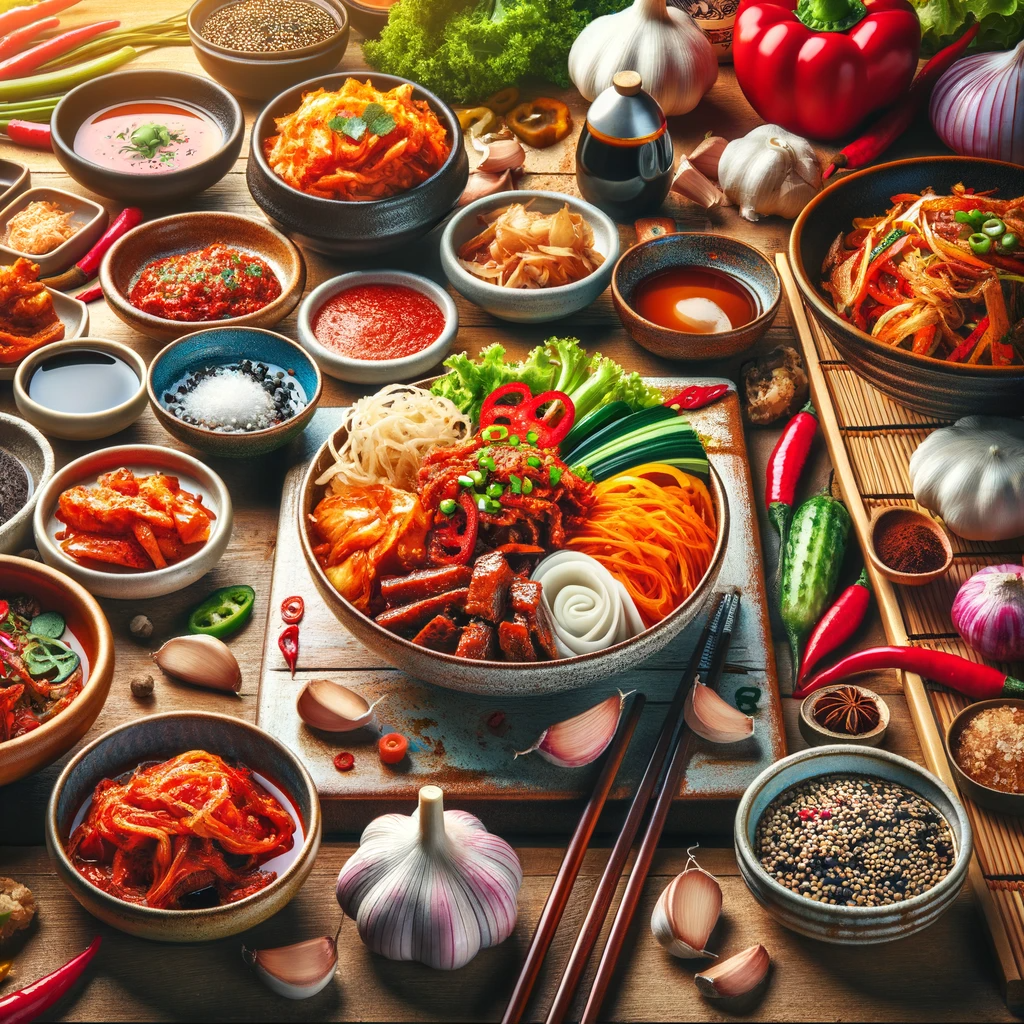Introduction
Korean cuisine is a tantalizing journey of flavors and textures, known for its balance of sweet, spicy, salty, and umami tastes. To truly appreciate this culinary wonder, it’s essential to understand the key ingredients that form the foundation of Korean dishes. In this article, we’ll explore these essential components and introduce you to some classic Korean dishes that showcase their remarkable flavors.
1. Kimchi: The Heartbeat of Korean Cuisine No discussion of Korean cuisine would be complete without mentioning kimchi. This iconic dish consists of fermented vegetables, primarily Napa cabbage and Korean radishes, mixed with a paste of chili flakes, garlic, ginger, and other seasonings. Kimchi’s spicy, tangy, and slightly sour taste is a staple in Korean households and adds a unique kick to countless Korean dishes, including Kimchi Fried Rice and Kimchi Jjigae (Kimchi Stew).
2. Gochugaru: The Soul of Spiciness Gochugaru, or Korean red pepper flakes, are the fiery backbone of Korean spice. Used to make kimchi and various spicy sauces, these vibrant red flakes bring the heat to dishes like Bibimbap and Dakdoritang (Spicy Chicken Stew). The level of heat can vary, so be sure to choose the right gochugaru for your preferred spice level.
3. Doenjang: The Umami Elixir Doenjang is a fermented soybean paste that contributes rich umami flavors to Korean cuisine. It’s a fundamental ingredient in dishes like Doenjang Jjigae (Soybean Paste Stew) and Bibim Naengmyeon (Cold Noodles). Doenjang’s savory depth is what gives many Korean soups and stews their comforting taste.
4. Ganjang: The Essential Soy Sauce Ganjang, or Korean soy sauce, is a vital seasoning in Korean cooking. It’s used for marinating, stir-frying, and as a dipping sauce. Korean soy sauce is slightly different from its Japanese counterpart, with a milder and less salty flavor. You’ll find it in dishes like Bulgogi and Japchae (Stir-Fried Glass Noodles).
5. Sesame Oil: Nutty Elegance Sesame oil is a fragrant finishing touch in Korean cuisine, adding a delightful nutty aroma. It’s drizzled over dishes like Bibimbap and Korean Pancakes (Bindaetteok) to enhance their flavors. Be cautious when using it, as a little goes a long way.
6. Rice: The Korean Staple Rice is the fundamental grain in Korean cuisine and is typically served with every meal. Whether it’s steamed rice, rice cakes (Tteok), or rice porridge (Juk), it forms the heart of Korean dining, providing a neutral base to complement the bold flavors of other ingredients.
7. Classic Korean Dishes to Savor Now that you’re acquainted with these key ingredients, let’s explore some classic Korean dishes that make the most of them:
- Bulgogi: Thinly sliced marinated beef, grilled to perfection.
- Japchae: Stir-fried glass noodles with vegetables and marinated meat.
- Samgyeopsal: Grilled pork belly strips served with various dipping sauces.
- Bibimbap: A colorful rice bowl topped with vegetables, meat, and a spicy gochujang sauce.
- Kimchi Jjigae: A comforting kimchi stew with tofu and pork.
Conclusion
Korean cuisine is a fascinating fusion of flavors and textures, and the key ingredients highlighted in this article play a crucial role in creating its unique taste profile. Whether you’re a seasoned food enthusiast or just starting to explore Korean cuisine, these ingredients will open the door to a world of delicious possibilities. So, gather these essentials, roll up your sleeves, and embark on a culinary adventure through the rich and flavorful world of Korean cooking.
